There are three reasons why one has to take great note of the ultimate weight of your completed van project.
Firstly,your licence may restrict you to a vehicle of no more than 3500 kg.In common with folks of my age,my licence has "grandfather rights" ,allowing me to drive a vehicle up to 7500 kg weight,but younger drivers would not have this eligibility.
Secondly,the heavier the load in the van,the greater the fuel consumption,hence the build needs to done be with lightweight materials wherever possible, with this in mind.
Thirdly,and most importantly,Renault have quoted my van as having a Maximum Authorised Mass,or MAM(Gross vehicle weight) of 3500kg. If it ends up weighing any more than this ,not only would it be illegal,but also unsafe,and risks the van being immediately banned from the road if caught at a police goods vehicle spot check.
Not only this,but the individual axles of my van have maximum safe loadings of 1860 kg for the front, and 2060 kg for the rear (the sum of the axle loadings is greater than the MAM ,to allow for load variation)
These figures are quoted on the chassis number plate attached to the vehicle.
Therefore it was with some trepidation that ,with the van build now fully complete,and with water ,diesel,and gas tanks all full to the brim,and carrying driver and one passenger and all the accoutrements needed for normal trips(eg kitchen utensils,hook up cables,etc)we visited the local public weighbridge,which is the local SITA bin lorry depot,for formal weighing and printouts.
The verdict is highly reassuring:-
Front axle 1620kg
Rear axle 1220 kg
Total weight 2880kg
That leaves me a payload of 620 kg,which gives ample allowance for a possible third passenger, a couple of dogs, bedding,personal luggage,2 or 3 days of food supplies etc ....and quite a considerable amount of wine !
The result is in some ways surprising given the vast amount of material that has been swallowed by the build.For example no less than sixty x 2.4 metre lengths of 44mm x 18mm pine have vanished into it somewhere .
Firstly,your licence may restrict you to a vehicle of no more than 3500 kg.In common with folks of my age,my licence has "grandfather rights" ,allowing me to drive a vehicle up to 7500 kg weight,but younger drivers would not have this eligibility.
Secondly,the heavier the load in the van,the greater the fuel consumption,hence the build needs to done be with lightweight materials wherever possible, with this in mind.
Thirdly,and most importantly,Renault have quoted my van as having a Maximum Authorised Mass,or MAM(Gross vehicle weight) of 3500kg. If it ends up weighing any more than this ,not only would it be illegal,but also unsafe,and risks the van being immediately banned from the road if caught at a police goods vehicle spot check.
Not only this,but the individual axles of my van have maximum safe loadings of 1860 kg for the front, and 2060 kg for the rear (the sum of the axle loadings is greater than the MAM ,to allow for load variation)
These figures are quoted on the chassis number plate attached to the vehicle.
Therefore it was with some trepidation that ,with the van build now fully complete,and with water ,diesel,and gas tanks all full to the brim,and carrying driver and one passenger and all the accoutrements needed for normal trips(eg kitchen utensils,hook up cables,etc)we visited the local public weighbridge,which is the local SITA bin lorry depot,for formal weighing and printouts.
The verdict is highly reassuring:-
Front axle 1620kg
Rear axle 1220 kg
Total weight 2880kg
That leaves me a payload of 620 kg,which gives ample allowance for a possible third passenger, a couple of dogs, bedding,personal luggage,2 or 3 days of food supplies etc ....and quite a considerable amount of wine !
The result is in some ways surprising given the vast amount of material that has been swallowed by the build.For example no less than sixty x 2.4 metre lengths of 44mm x 18mm pine have vanished into it somewhere .
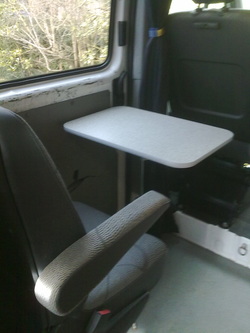
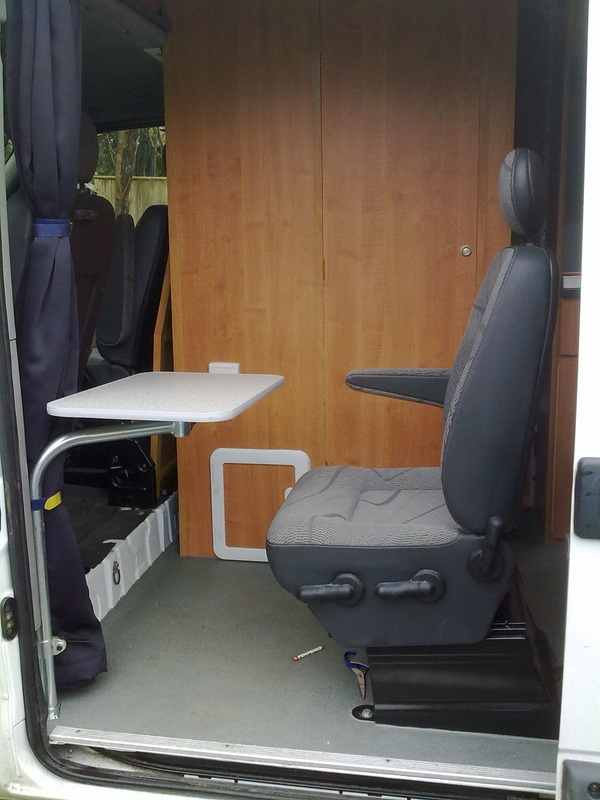
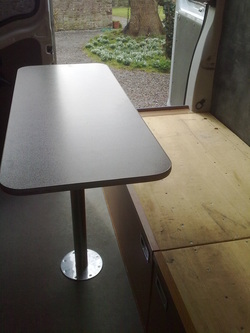




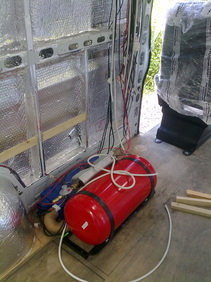
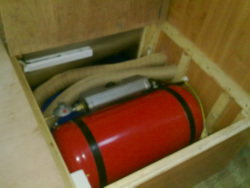
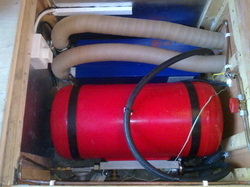
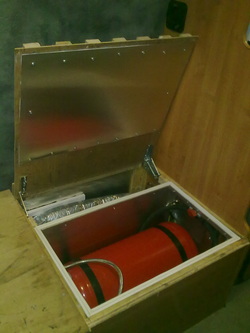

 RSS Feed
RSS Feed